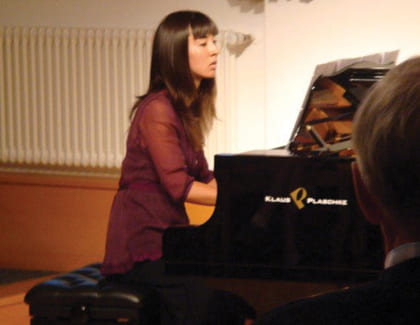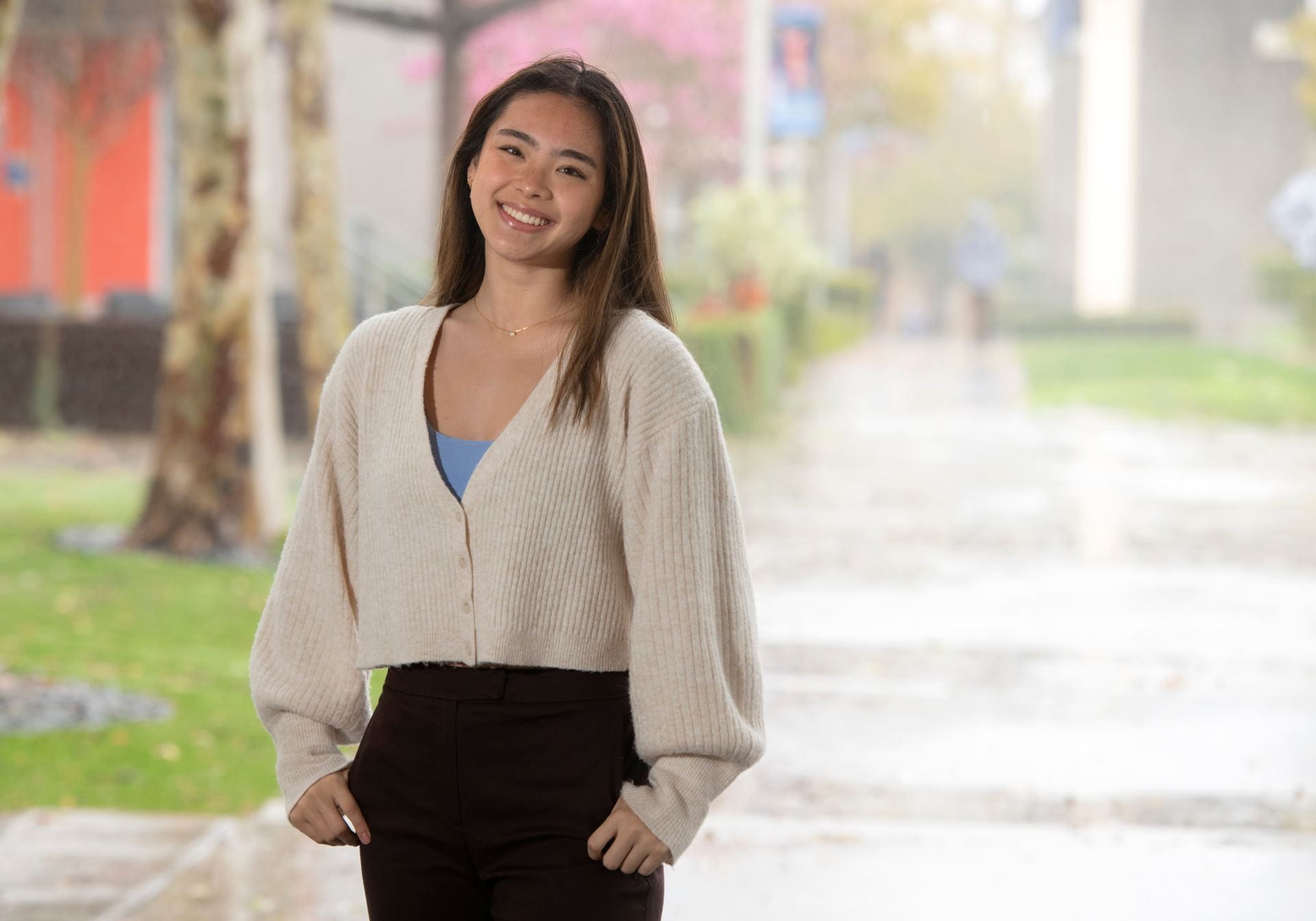The art of giving
Medici Scholars program helps arts students launch their dreams
They travel across the country or the world, or they stay right here at UC Irvine. They dance, they sing or they bang drumsticks on giant water bottles.
What they have in common is a love of the arts and the desire to pursue their dreams as far as they can go. They are the Medici Scholars.
The Medici program – named after the powerful arts patron family that flourished in Florence between the 13th and 17th centuries – provides awards for students from the Claire Trevor School of the Arts. It gives them chances they might not otherwise have to blossom as artists by attending esteemed programs.
“It’s an absolutely essential bridge for art students between school and the development of professional fields,” says Nohema Fernández, arts dean. “In the arts, students need to extend their wings. This opportunity is literally life-transforming.”
Twenty students were selected for the competitive program this year. Private patrons finance the awards and follow the progress of the student they sponsor. The result is a summer to remember.
Virtual drumming
Scholar: Byeong Sam Jeon
Donor: Hseuh Family
Mentor: Antoinette LaFarge, associate professor, studio art
Byeong Sam Jeon’s current art project isn’t exactly the visual kind, unless you enjoy gazing at giant, upside-down water bottles outfitted with maracas and drumsticks.
“This is a new way of presenting art,” Jeon says.
What Jeon has created, in part through his Medici scholarship, is a telematic drum circle. He got the idea a few years ago. While walking down the street in Chicago where he was a sculpture student, he came across a group of people sitting in a circle, banging on buckets – everyone somehow in sync.
“There was a moderator in the middle,” Jeon recalls. “I sat down and started tapping on my little water bottle. Everyone was watching each other. It was a really great moment for me.”
Now, Jeon, a 30-year-old arts computation engineering student from Seoul, South Korea, is trying to replicate that experience via his interactive Web site, which is networked to robotic drums set up in a cavernous room in UCI’s California Institute for Telecommunications and Information Technology.
When Jeon’s exhibit is active, drummers can log on from anywhere in the world at www.TelematicDrumCircle.net, select a drum to play remotely and listen to it through their speakers – a social interaction that transcends race, religion, gender and location.
“That kind of communication with others’ minds and thoughts is my art,” he says.
Jeon understands firsthand how important it can be to make those interactive connections.
Throughout his childhood, he had a problem with bedwetting. Because of it, he was sensitive and had difficulty making friends.
So he spent his spare time hanging out near construction sites where his father worked as a carpenter.
He gathered up spare pieces of wood and wire, and started making little sculptures. His work attracted attention from neighborhood kids, who asked him about his imaginative creations. Through those first wood-and-wire creations, Jeon made his first friends.
“It was magic,” Jeon says. “Once I had friends, the bedwetting was gone. I was healed while I was making art.
“I believe art has a superpower that can impact people in other ways. It’s a tool I can use to contribute to society.”
American Dance Festival
Scholar: Julie Minaai
Donor: Nohema Fernández
Mentor: Lisa Naugle, associate professor, dance
Julie Minaai, a 20-year-old junior from Oahu, did not expect to find the aloha spirit thriving in Durham, N.C.
Spending six weeks this summer with 400 students at the American Dance Festival at Duke University convinced her that dancers can cheer for each other, that her enthusiasm doesn’t have to be tempered by temperamental performers.
Minaai, a modern dancer trained in ballet, took three classes. She learned the process of choreography and perfected difficult dance techniques. But most of all, she came to understand what it takes to be a professional dancer.
“People who do dance have such an open perspective toward everything in general,” she says. “They appreciate art. And art is what makes us human.”
Breaking into musical theater
Scholar: Quinn VanAntwerp
Donor: Dr. Rosalyn Laudati
Mentor: Gary Busby, assistant professor, drama
Landing a professional musical theater gig takes more than showing up to auditions and reading lines. There are headshots, resumes, voice lessons, recording a CD demo, travel costs.
Quinn VanAntwerp, 21 and a senior, used his Medici scholarship to create his portfolio and make the jump from academic theater to professional theater.
He won parts in four shows this summer, including the role of Trevor Grayson in Thoroughly Modern Millie this fall at San Diego’s Lawrence Welk Theatre.
The ultimate goal? Broadway. He can’t imagine life without musical theater.
“I don’t think any other art form gives you all of this,” he says. “When speaking isn’t enough, you sing. When singing’s not enough, you dance.”
Schlern International Music Festival
Scholar: Rita Rowe
Donor: Michelle Mun
Mentor: Lorna Griffitt, lecturer SOE, music
The view out her apartment window was very Sound of Music – goats, green hills, soaring Alps. The gorgeous scene was the perfect backdrop for the beautiful music 21-year-old senior Rita Rowe made this summer at the Schlern International Music Festival in South Tyrol, Italy.
“I realized that I really want to do this, to live, breathe, eat, sleep music,” says Rowe, who played in area churches.
The experience solidified her interest in playing with singers, rather than solo.
“The human voice is the closest to your heart,” Rowe says. “You’re really making music together.”


